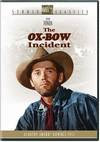Deadline USA
All the President’s Men
The Soloist
As you may know from my previous postings, I’ve spent most of my working life as a print journalist – reporting, copy editing and designing pages for newspapers and magazines. Although I have loved reading newspapers since I was a kid, I wound up in journalism kind of by accident: I thought I wanted to be a politician but discovered that journalism was a better fit. In my estimation, a feeling that goes back to my childhood, journalism is among the noblest of professions – ranking up there with the practice of medicine, classroom education, firefighters and police officers. I should add a caveat to that last statement: If doctors, educators, firefighters, police officers, journalists or any other public servants place more importance on accumulating wealth and/or power than on selflessly serving their communities, then they are tarnishing both their professions and their personal integrity.
The three movies to be discussed in this posting – Deadline USA (released in 1952 in black and white), All the President’s Men (1976, color) and The Soloist (2009, color) – provide excellent examples of why I hold print journalism in such high regard.
In a personally uncomfortable similarity to both the loss of my previous job as an editor at The Miami Herald and the demise of newspapers across the country over the past decade, Deadline USA is the story of The Day and its crusade to expose a vicious criminal enterprise in the closing days of the newspaper’s existence. The Day is run by managing editor Ed Hutcheson and owned by Margaret Garrison, who doesn’t want to sell the paper, and her two daughters, who are the majority shareholders and want the money being offered by the owner of The Day’s rival, Lawrence White, who plans on shutting down the well-respected newspaper. But Ed’s fight to keep The Day alive is just one of his battles.
The movie begins with leader of the criminal enterprise, Tomas Rienzi, testifying before a state Senate committee, and the discovery of a dead woman floating in the river wearing nothing but a fur coat. While Ed focuses on the Rienzi hearings, sending a reporter to look into the crime tsar’s business, he refuses to run a picture of the dead woman because he considers it the kind of prurient sensationalism that is used by profit-hungry tabloids like the one owned by White. After the reporter is roughed up by Rienzi’s goons, Ed kicks the investigation into high gear. He learns that the woman found in the water was Rienzi’s mistress and that she had a brother who is a boxer managed by Rienzi’s organization. Ed sends one of his sports reporters to find the boxer and bring him into the office. After obtaining Ed’s promise to protect him from Rienzi, the boxer tells the managing editor about a large sum of money Rienzi had given his sister, who spent part of it before hiding the rest. Then while Ed is at court trying to fight the sale of the newspaper, two police officers go to The Day to arrest the boxer. But the police officers are really Rienzi’s men and the boxer dies as he tries to escape while leaving the newspaper building.
But although Ed can’t stop the sale of the newspaper, all is not lost as far as the crusade against Rienzi is concerned. The mother of the dead woman and the boxer, who expressed great respect for the integrity of The Day, goes to the newspaper with her daughter’s diary and the rest of Rienzi’s ill-gotten money. Ignoring a death threat from Rienzi, Ed uses the final edition of The Day to run a front page exposé on Rienzi’s operations.
I have a slightly personal connection with the movie All the President’s Men, which tells the story of how Washington Post reporters Bob Woodward and Carl Bernstein brought down the presidency of Richard Nixon with their investigative reporting during the Watergate affair. Although I was working at now-defunct The Washington Star during the scandal, I was working at The Washington Post when the movie’s cast and crew visited its newsroom to research the environment in which Woodward and Bernstein worked.
The Watergate scandal began in 1972, when a group political operatives, known as plumbers and working for Republican President Nixon’s reelection committee, was caught after they broke into the offices of the Democratic National Committee. Those offices were located near the Potomac River in the residential and commercial complex – in Washington, D.C.’s, tony neighborhood of Foggy Bottom – called The Watergate. The work of Woodward and Bernstein, with the help of an unidentified source known as Deep Throat, not only uncovered the reasons for the break-in but also the plot orchestrated from the White House – with the knowledge of the president – to cover up the plumbers’ connection with Nixon’s reelection committee.
Despite the scandal, Nixon won reelection. But as Woodward and Bernstein continued their investigation and the scope of the malfeasance became public, calls for Nixon’s impeachment increased on Capitol Hill. But rather than becoming the first president to be removed from office, Nixon decided to resign. While many of his administration’s officials were prosecuted and jailed for their roles in the scandal, Nixon avoided that fate when he was pardoned by President Gerald Ford – who was Nixon’s successor and had been his vice president.
The Soloist is also based on a true story – one that I first learned about from television’s 60 Minutes news magazine program. That report piqued the interest of me and my wife and we anxiously awaited the release of the movie. The film is about an Hispanic Los Angeles Times columnist named Steve Lopez who gets caught up in the fascinating story of a black, homeless, mentally disturbed, exceptionally talented, Beethoven-loving musician named Nathaniel Anthony Ayers, Jr. – who, when they first met, was playing beautiful music on a two-string violin.
Mr. Ayers’ talent first became apparent when he was a child – information Mr. Lopez got when he contacted the musician’s sister, who was living in another state. With encouragement from his cello teacher and after hours upon hours on practice, Nathaniel was accepted to Julliard, the country’s premier high school academy for talented performing artists. The film showed that as a child, the young Nathaniel possessed a kind of obsession that was negatively affecting his life. This possession burst to the foreground while he was at Julliard, where voices in his head scared him, filled him with self-doubt and ended his studies. Over time, he drifted to Los Angeles and began living on the street because he felt uncomfortable living under a roof.
The plight of Mr. Ayers touched Mr. Lopez so much that after his first column on the homeless musician, he continued to inform his readers with updates on Mr. Ayers’ life. One of his readers, an octogenarian cellist who no longer played because she suffered from arthritis, donated her cello to Mr. Ayers. But Mr. Lopez wouldn’t allow Mr. Ayers to keep the expensive cello with him on the street. It took a bit of doing, but Mr. Lopez managed to get Mr. Ayers go to a community center that focused on the homeless to play the instrument. The reason for this demand was that the community center could ensure the safety of the instrument.
Mr. Lopez then arranged to take Mr. Ayers to a rehearsal of the Los Angeles Philharmonic Orchestra after the Beethoven fan had refused to attend a concert that will be attended by other people. While watching Mr. Ayers listen to the rehearsal, Mr. Lopez was able to witness the depth of the homeless man’s love for music. Mr. Lopez – who would later express envy for the depth of the mentally disturbed man’s ability to love – then arranged for one of the orchestra’s cellist to give Mr. Ayers lessons. But there was another caveat: The lessons had to take place in an apartment in which Mr. Ayers could sleep. The community center provided the apartment and Mr. Ayers began taking the lessons in his new home. Then the music teacher set up a recital for Mr. Ayers. However, the voices in his head sabotaged the event and Mr. Ayers attacked, but didn’t harm, his music teacher while on stage before the audience.
The next item on Mr. Lopez’s agenda was to cure Mr. Ayers of his mental instability, but he was rebuffed by the manager of the community center. Nonetheless, Mr. Lopez pressed on and tried to get Mr. Ayers to commit himself to a psychiatric hospital to get some help. This backfired when Mr. Ayers began beating on Mr. Lopez and threatened his life. Disillusioned by the incident, Mr. Lopez went to talk with his ex-wife. She essentially told Mr. Lopez the same thing the community center manager did – that instead of trying to cure Mr. Ayers, he should just accept the musician as he was.
Apparently taking the advice to heart, Mr. Lopez arranged for Mr. Ayers sister to come to Los Angeles for a visit. After the siblings met, a contrite Mr. Ayers went to Mr. Lopez to apologize for his violent behavior. Mr. Lopez responded by telling Mr. Ayers that sometimes friends have disagreements. The two men shook hands and then, with Mr. Ayers’ sister and Mr. Lopez’s ex-wife, they attend a Los Angeles Philharmonic Orchestra concert – with Mr. Ayers enjoying, loving, the music while surrounded by a concert hall full of strangers.
The importance of newspapers’ reports on crime and political corruption are among their more worthy attributes – as shown by Deadline USA and All the President’s Men. However, I believe that the most worthy attribute of newspapers, and other forms of journalism, is their ability to help people connect on an emotional level with other people – as shown by The Soloist. Mr. Lopez’s columns moved an elderly white woman to reach out to a homeless black man with a gift whose value was greater than monetary. They also moved Los Angeles politicians to make a huge financial commitment to the community center that was helping care for the city’s homeless population – which is said to be around 90,000 individuals. Additionally, the interaction between the columnist and his subject benefited both of them. Mr. Ayers discovered that he could control the impact his voices had on him. My Lopez learned that love – be it for someone or something – can indeed be a thing of joy and wonder. And, both Mr. Lopez and Mr. Ayers learned that true friends – and by extension, true lovers – do not, should not and need not always try to impose conditions on their love.
God, I hope that newspapers never die.
Monday, May 4, 2009
Subscribe to:
Post Comments (Atom)






























































No comments:
Post a Comment